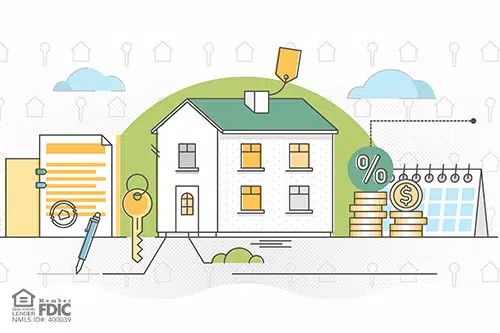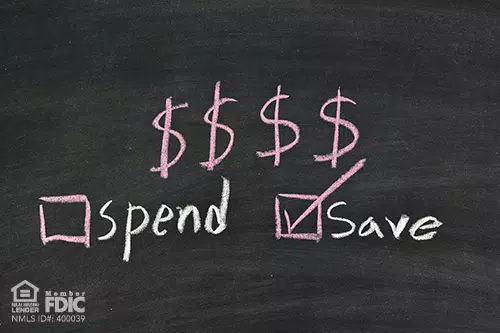It's an exciting time when you are buying a home. However, the process can be overwhelming. Navigating through all the necessary steps can be particularly challenging for a first-time home buyer. Knowing what to expect before you start the mortgage process can help you stay on track and make the overall process smoother. Here are some tips to help you learn more about the steps in the mortgage process.
Shop for Lenders and Get Pre-Approved
Before you even start looking at homes, you need to sit down and think about the type of mortgage loan to pursue. The amount you have available for a down payment, your credit score, and other factors will help determine the mortgage that makes the most sense for you. For instance, a VA loan may be the best choice if you are a military member. Or if you are self-employed and don't have W-2s or paycheck stubs to verify your income, a bank statement loan may make sense. Once you've narrowed your options, you can shop for lenders offering those mortgage loans.
Choose and apply to at least three different lenders. This allows you to compare rates and terms and get pre-approved in the process. Real estate agents and sellers will take you more seriously when you are pre-approved for a mortgage loan. Compare them and take note of the lender who offers you the most favorable rates.
Start Shopping for Homes and Submit an Offer
Getting pre-approved will also tell you how much you can borrow for a home. Your realtor can narrow down the houses to look at your price range. Some lenders also have programs that allow you to get ahead of the loan process by reviewing your loan with underwriters ahead of time and providing a commitment letter stating that you are approved to be financed. You can close faster and get ahead of competing buyers.
Once you have found a home that meets your needs, it's time to make an offer. The offer will include some conditions, such as the appraisal, which will be close to the loan amount, and how the borrower will obtain funding. Once the seller accepts the offer, you both sign a purchase agreement. This means that both parties approve the deal, and you can move on to finalize your loan.
Finalize Your Mortgage Loan and Closing
Now it's time to choose the lender that best aligns with your financial goals and let them know you're ready to proceed. This moves the mortgage to the underwriting process, where you will likely need to submit additional documentation. Respond to these requests quickly to keep the underwriting process moving.
An underwriter will validate your income, credit history, and other items. A title search will be done to ensure that the property you are purchasing does not have any judgments, liens, or other disputes that could prevent the sale.
You need to get started on several other things during closing. Your lender will require you to appraise the home to determine its market value. Different inspections might also need to be completed depending on the lender, property, and loan type. A home inspection is generally not required by a lender, but it's a good idea to have one completed. They could uncover problems you might otherwise not know about until after the loan is closed.
In the meantime, the underwriter will be completing their review of your finances and make a decision. When you are "cleared to close," you have final underwriting approval and are set to move forward with a closing date.
The Closing Date
The lender will send you a closing disclosure about three days before your official closing date. This document outlines the terms of your loan, the required down payment, and the closing costs. It is similar to the loan estimate you received when submitting your pre-approval application. Thoroughly check the closing disclosure against the loan estimate and notify your lender if you have any questions about discrepancies between the two.
Before you head to the closing, ask your lender what you should bring. Generally, you must bring a valid ID and cashier's check to cover the down payment and closing costs. The final mortgage agreement documents and a settlement company representative will be available to explain the terms of the contract.
Once you have signed the necessary documents, the lender will deliver funds to the settlement company, combine them with your funds, and distribute them accordingly. The deed and mortgage are recorded once funds and approval have been obtained. The property is returned to your name, and your mortgage process is complete. You're ready to move into your new home!
When you're ready to purchase your dream home, call the experts at NASB at 888-661-1982 or click here to learn more.




